Best shade plants – 10 shade-loving plants for your garden
Bring shady spots of your garden to life with shade plants and make the most out of every available growing space


Harness the full potential of your garden by using shade plants to bring even the shadiest corners to life.
Since most plants prefer full or at least partial sunlight, it can be difficult finding plants for shade. We often neglect shady spots, writing them off as areas for planting. Luckily, there are a good number of shade loving plants that as part of your garden ideas you can include to create spectacular displays in these darker areas.
Many gardeners choose to use shady spots in their garden for sheds, compost bins, or simply somewhere to store garden furniture when not in use. Often these areas are neglected, but when a shady spot in your garden is front and center, or most of the garden is in shade, you need to get creative.
Shaded areas in our garden can become dramatic and beautiful features if you choose the right shade plants to bring them to life.
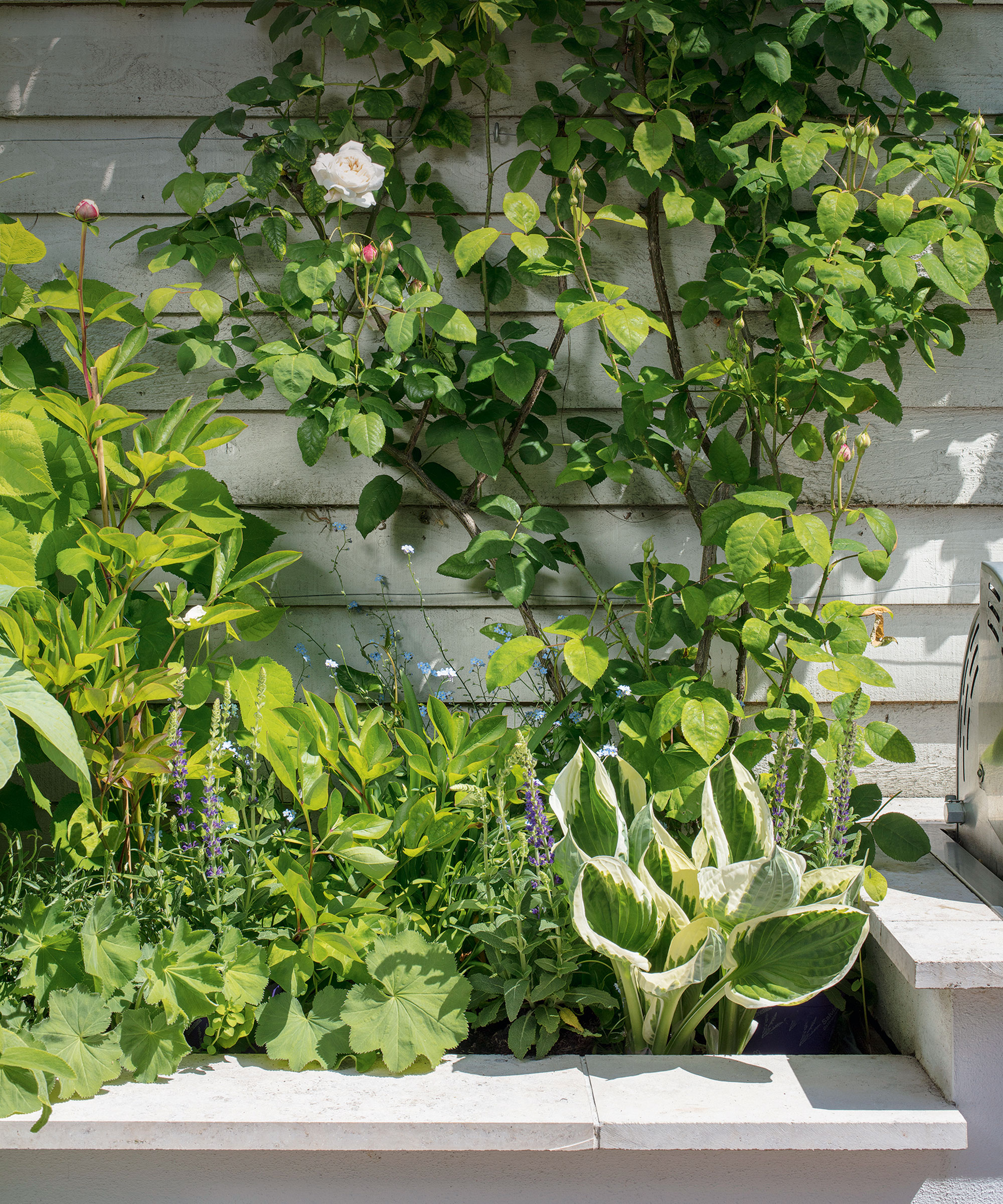
Shade plants – what to consider
A large portion of gardening successfully comes down to growing the right plants for your conditions. If you’re attempting to grow plants that will not naturally grow in the conditions you have, you are setting yourself up for a lot of work or failure.
Plants need sunlight to photosynthesize and grow. It’s impossible to grow plants without it, but some shade plants are adapted to growth in low light conditions. They have specific adaptations in their leaves that help them to capture the light, meaning that they can grow in natural conditions, such as forest floors, deep valleys or even caves. Those with small, enclosed courtyard gardens might have very little choice but to garden with shade plants.
When growing in shade, plants will lose less water through the leaves, and there will also be less water loss from the surface of the soil. So often shaded areas require less watering, too.
We cannot expect plants that are adapted to live in sunny conditions to thrive in the shade, and vice versa, so good plant selection is essential for success.
Just as there are shrubs for shade and even some easy vegetables to grow in shade, there are easy to grow shade plants, including beautiful spring flowers, that will thrive in beds, borders or even as container plants for shade. There are also plenty of woodland plants that are suited to the specific conditions of wooded areas.
1. Hostas
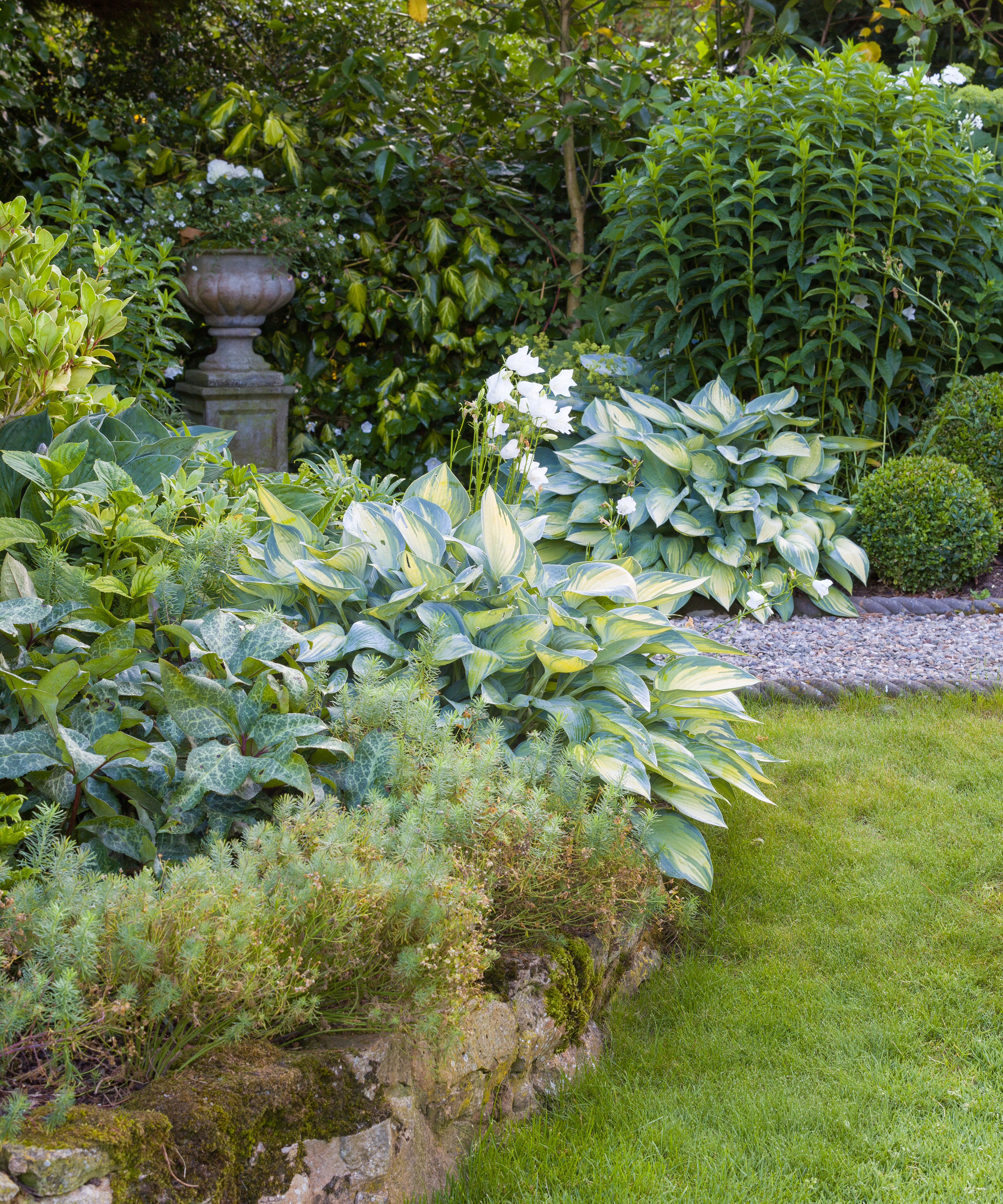
Zones 3–8
Hostas are beautiful perennials, valued for their lush, dense foliage, and large decorative leaves and are a must-have shade plant.
They come in a variety of colors with some beautiful blue hues and spectacular variegation so are a great addition to shady flower beds as part of north facing garden ideas.
Hostas make great understorey plants and have delicate purple flowers spikes in summer. In case this wasn’t enough, their young leaves are also edible and a great alternative to asparagus.
‘Hostas are greedy, thirsty plants,’ says Monty Don of Gardeners World. They like moist, rich soils. 'The key thing for hostas is that they aren’t too dry in winter,' he continues. He recommends adding compost to the soil to improve its moisture retention and mulching the plants annually.
They are prone to slug damage, so it’s important to grow plants in good conditions so they can thrive. ‘I’ve discovered that an awful lot of hosta damage is a result of stress. A happy hosta tends not to be eaten so much by slugs and snails,’ says Don.
These perennials can be grown from seed, bulbs or from dividing plants. It is easiest and quickest to plant bulbs or divided plants and make sure you know when to plant hostas.
Lift and divide when the leaves are just starting to spike through the ground. Remove the entire clump and cut it into sections. Each leaf will make a new plant if it has some root attached, but if you want bigger, healthier plants, divide into clumps of several leaves.
‘The key to dividing hostas is to be brave’ says Monty Don. ‘It's a fairly corky, solid chunk of root in there and if you go too tentatively, you can actually damage it. So choose your line with a sharp spade and then go for it,’ he says.
If your garden is prone to slugs, you may want to consider growing hostas in containers as part of your container gardening ideas. Choose a large container that will have good water retention and choose a rich potting compost.
You can also collect seeds from dry seed heads in fall and plant them straight away in trays of potting compost. Be aware that your hostas may not come out looking the same as the parent plant, but it can be a fun way to propagate.
2. Ferns
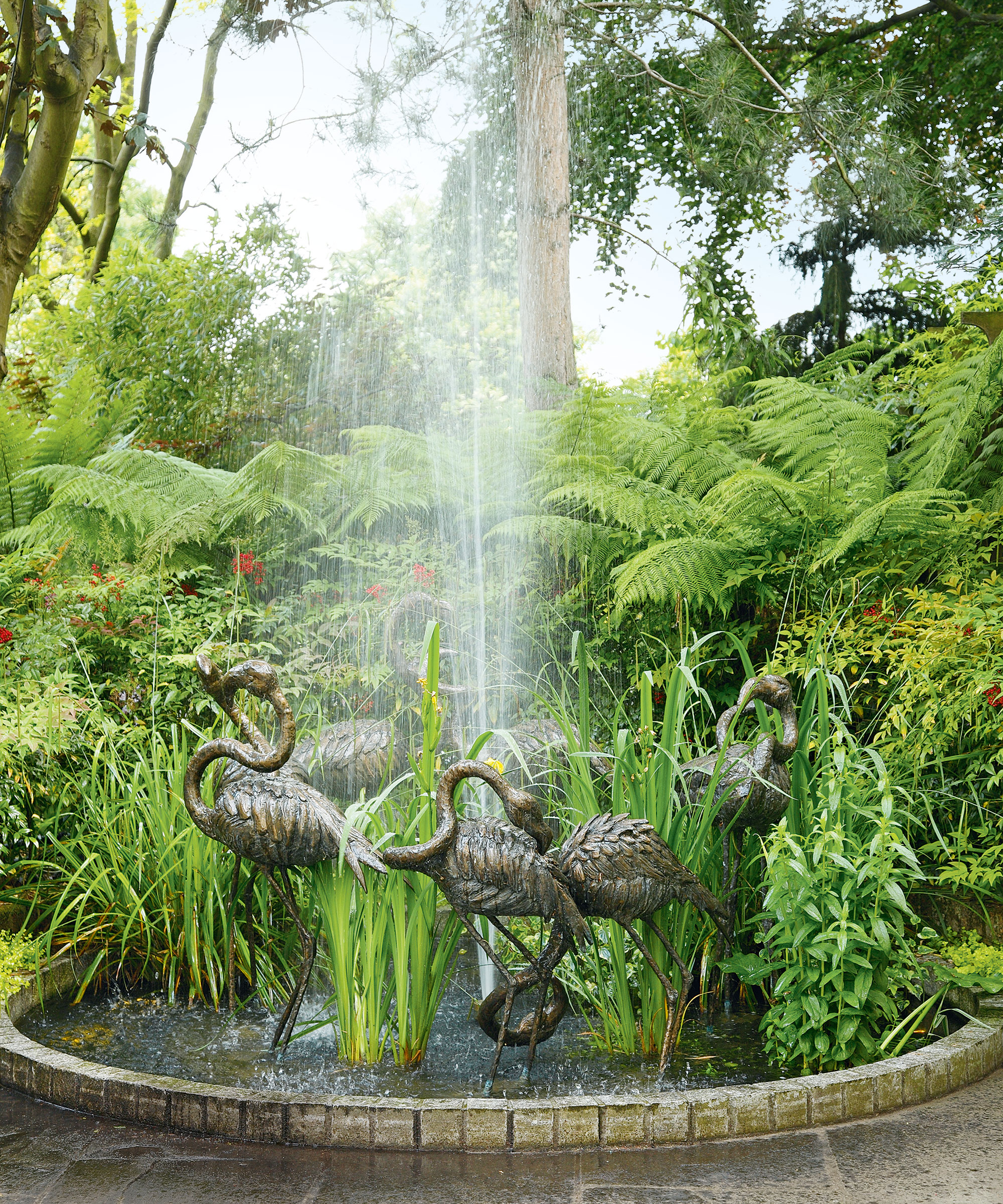
Zones 2–10
Ferns are another beautiful and diverse shade loving plant grown for their foliage and make a textural addition to flower bed ideas. They are available in lots of forms ranging from thick chunky leaves to delicate fronds, so there is bound to be something to suit your taste.
If you're wondering how to grow ferns, they thrive in damp, shady spots, so work well as plants for under trees, but there are some that are adapted for life in dry shade, too. While some are perennial and will die back in winter and unfurl their leaves in spring, others are evergreen. If you're looking for tropical garden ideas, they will add a lovely jungle feel to your garden.
Choose a fern that suits your conditions. Some may need some protection during winter, while others are hardy; some will prefer full shade and others partial shade, so, it’s important to determine your conditions before sourcing your plant. They can also work well in living wall ideas.
Ferns can be grown from spores as they do not produce seed, but this takes some time and can be quite hard work, so it's recommended to buy an established plant or divide a mature plant, as with hostas.
There are two different methods for dividing ferns, depending on the type you have. If your fern forms crowns, with the leaves unfurling around a centre point you can simply identify where the crowns are and cut them apart using a sharp knife, making sure to keep a section of root with each crown.
Ferns that form rhizomes – underground roots – are easier to divide. Simply lift the plant and find the rhizome, they are usually just below the surface and extend out to the side. Cut a section of the rhizome with some leaf or leaf bud on it and it will form a new plant.
3. Heuchera
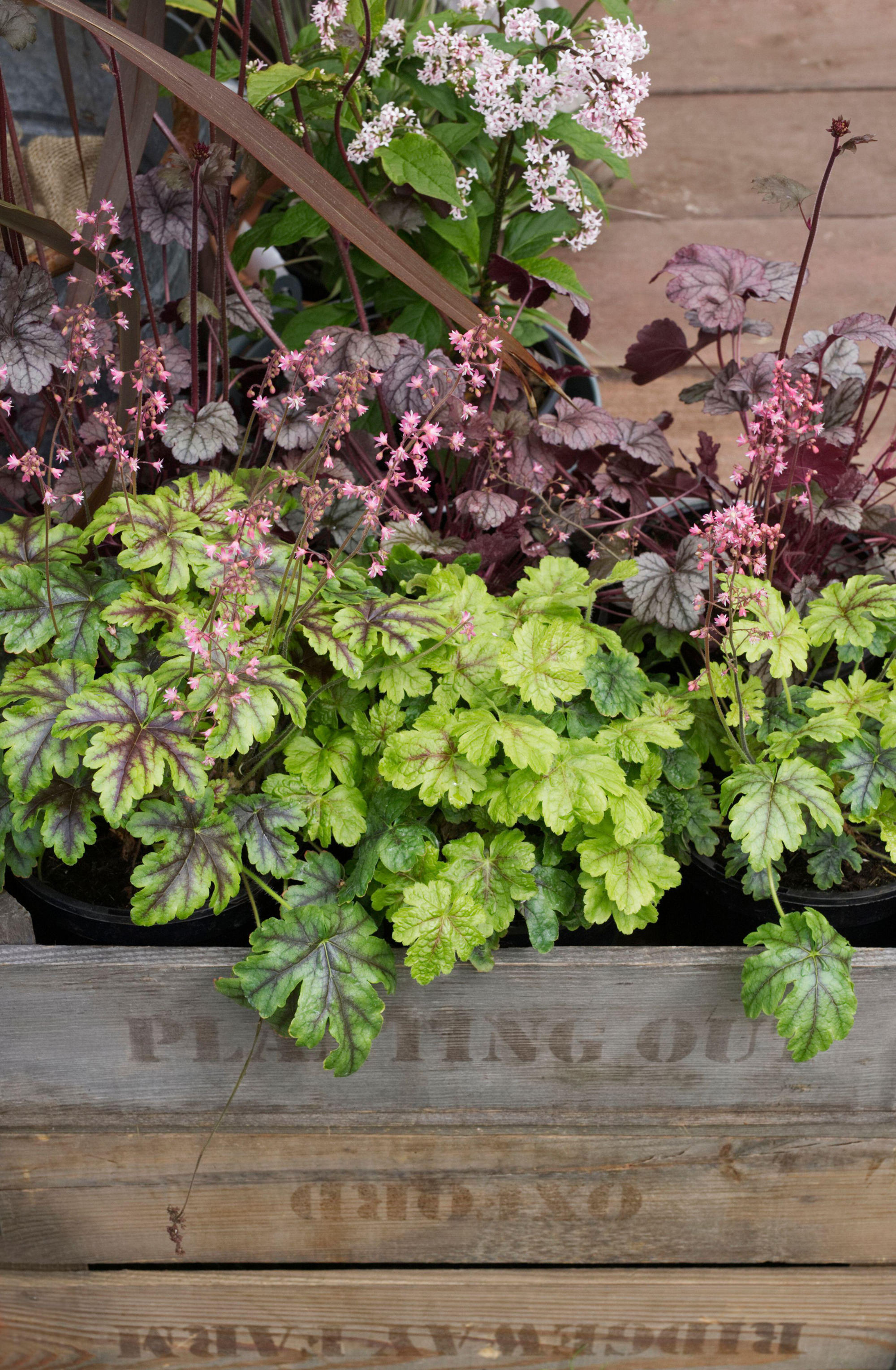
Zones 4–9
Native to the woodlands of North America, these hardy perennials, sometimes known as coral bells, foamflower or alumroot, are a joy for many parts of the garden. They form clumps of dense leaves in a rainbow of colors ranging from red through to blue, orange, and bright green. Their tiny delicate flowers grow on stalks creating a misty effect over the leaves.
Heuchera prefer partial rather than full shade, but some varieties will require less shade than others – if in doubt ask your supplier. They like a moist but well drained soil and will grow well in containers. Some even having a trailing habit making them a choice of plants for hanging baskets.
Heuchera are most easy grown from buying plants at a nursery or dividing an existing mature plant. Divide Heuchera in spring by digging the plant up and pulling off the clumps from around the edge. The woody center of the plant can then be discarded. Grow the small sections on in pots in a shady spot and protect them from full sun.
These colorful evergreens are good plants for pots all year round and easy to look after.
4. Caladium – elephant ears

Zones 9–11
Caladium, sometimes called elephant ears, are known for their impressively large leaves. They are in the same elephant ear family as colocasia, but come in more beautiful colors and patterns and can add real interest to any darker corner as shade plants. Some varieties are bigger than others, so ensure to choose a variety that suits the space that you have.
Caladiums are warmer climate plants and are only winter hardy down to zone 9, so make sure you know how to care for elephant ears. They can tolerate 2 to 4 hours of sunlight a day and will grow better if they are allowed a little bit of sun during the day. They are an easy plant to grow and will grow quickly in the right conditions.
Caladium grow from tubers underground and can be grown by purchasing a plant or tuber, or by digging up an established plant and dividing the tubers. Once you know how to plant elephant ear bulbs you can add them to all corners of the gardens.
They prefer a rich, well-draining soil with plenty of organic matter.
5. Bleeding heart – Dicentra spectabilis
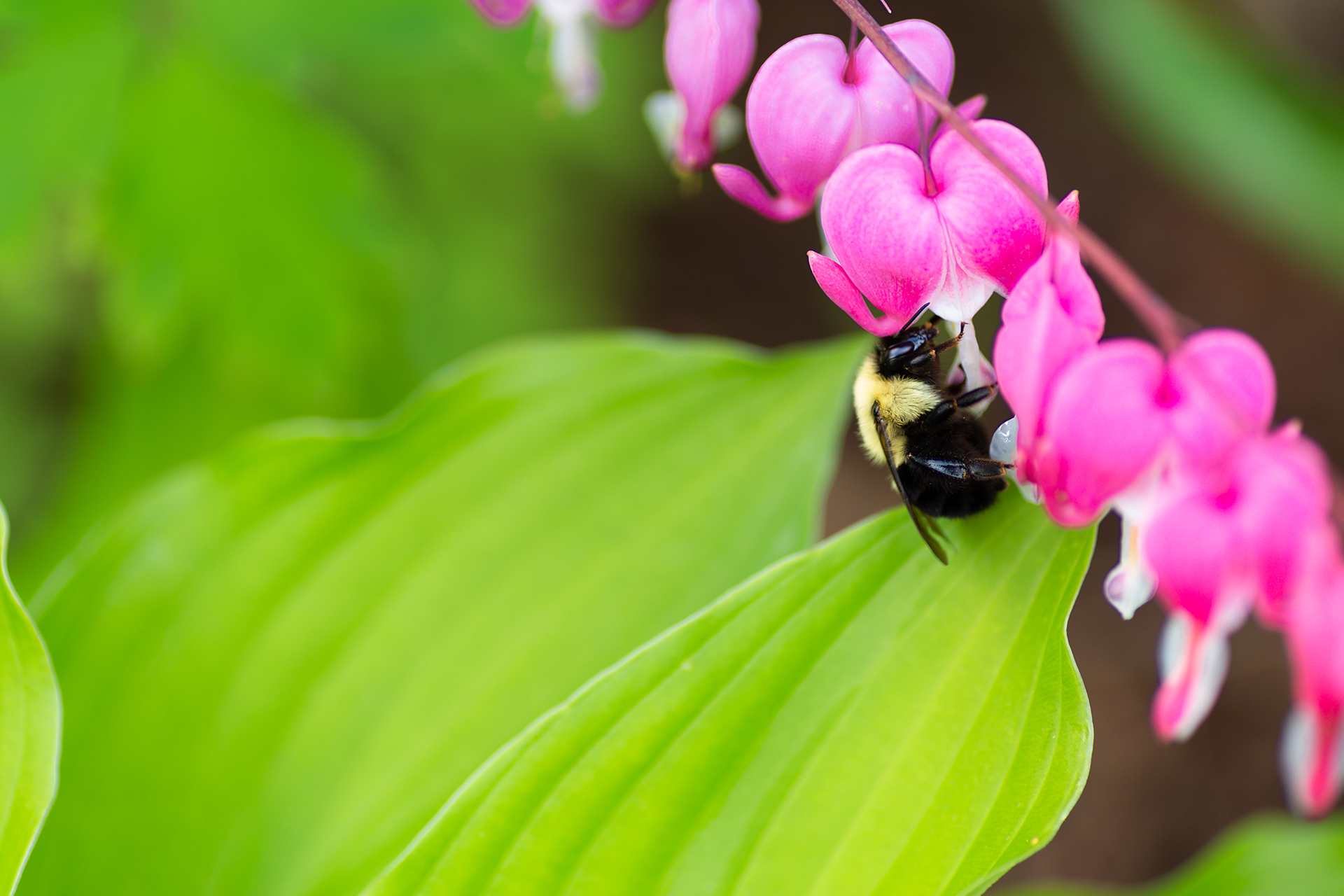
Zones 3–9
Bleeding heart, or Dicentra spectabilis, is a beautiful and decorative plant that enjoys a shady position in the garden. In the summer it has long branches of flowers shaped, as the name suggests like bleeding hearts. These plants are a joy to see and are available in a few different colors, including the common pink and white flowers to red and an all-white flower, which adds light to a dark area.
They are also shade plants favored by our buzzing pollinators with flowers that attract bees, so have even more in their favor.
This herbaceous perennial prefers rich, moist soil and part or full shade. They will not tolerate areas that are prone to flooding as they can develop root-rot. So make sure to add lots of organic matter to your soil to retain water and reduce water-logging. Dicentra is easy to grow and rarely encounters problems once established. It is important to keep it well watered at first to allow it to become established.
Bleeding heart can be grown from seed, but it is easiest to grow from a nursery seedling or from dividing an established plant.
Dividing a bleeding-heart clump is easy. Simply lift the plant out of the ground in spring just as the buds are beginning to appear from the crown. Cut the crown with a sharp knife or spade so that each section has at least one bud (more is better!) and some roots. Then re-plant each section into a humus-rich soil and water in well.
Bleeding heart can also be grown from cuttings. For how to take plants cuttings, choose a stem without any flowers on and cut a 4–6-inch section. Remove the leaves from the bottom half of the section and place in a container of well-drained but moist potting compost. Keep out of direct sunlight. Keep the medium moist until roots appear and then pot on your seedling.
6. Hellebores
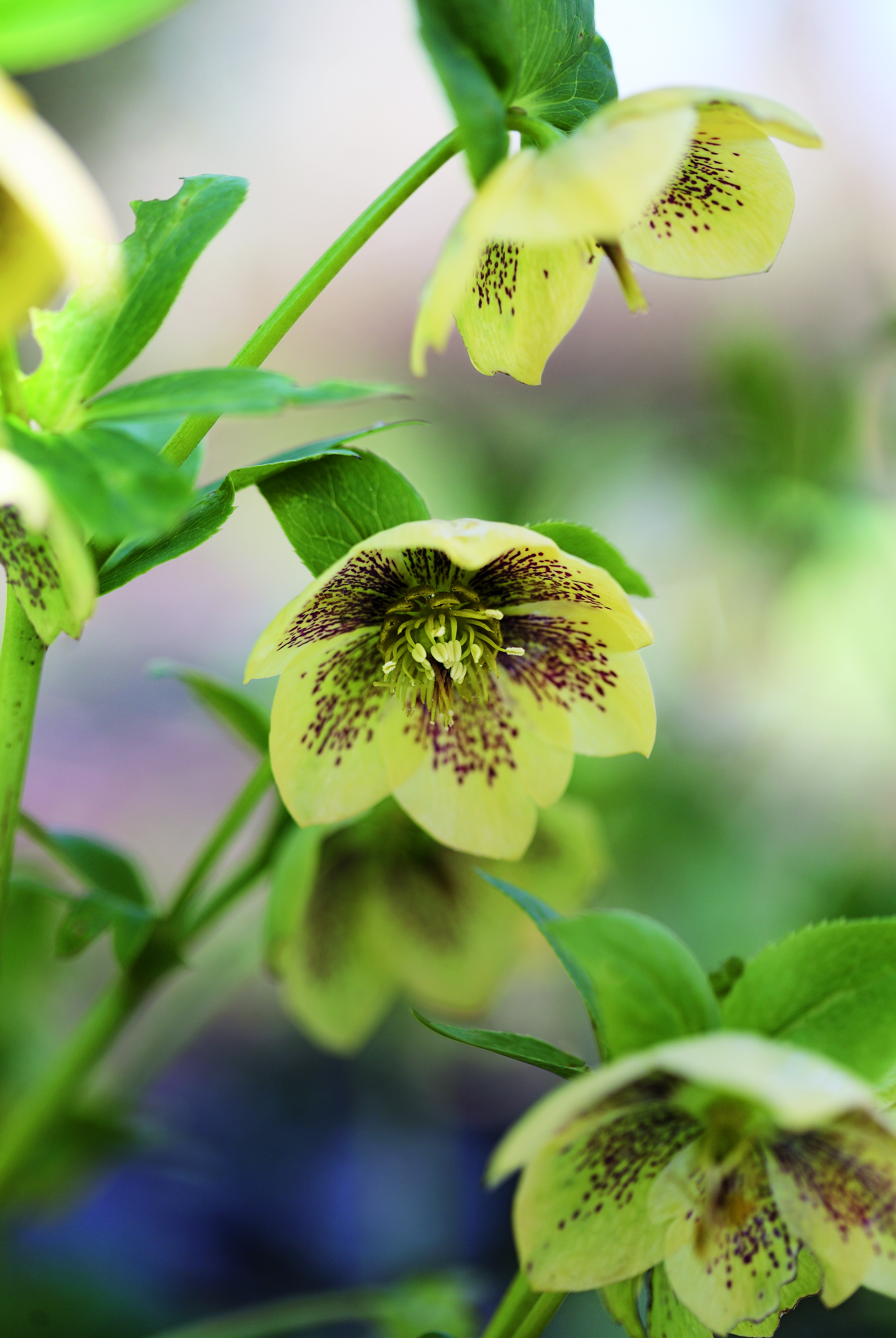
Zones 3–9
Hellebores, or winter roses, are beautiful shade plants to grow to add color and interest to a shady spot. They also flower in winter making them particularly attractive to pollinators just coming out of hibernation and among the best winter flowers. The flowers range in color from deep red to speckled pinks and purples and even greenish white. They are also well behaved, clump forming plants that are very low maintenance.
Hellebores prefer full or partial shade and rich, well-drained soils. It is easy to learn how to grow hellebores, and they can be propagated through division but do not like to be moved once they are established, so dividing a root ball can be quite risky.
7. Impatiens
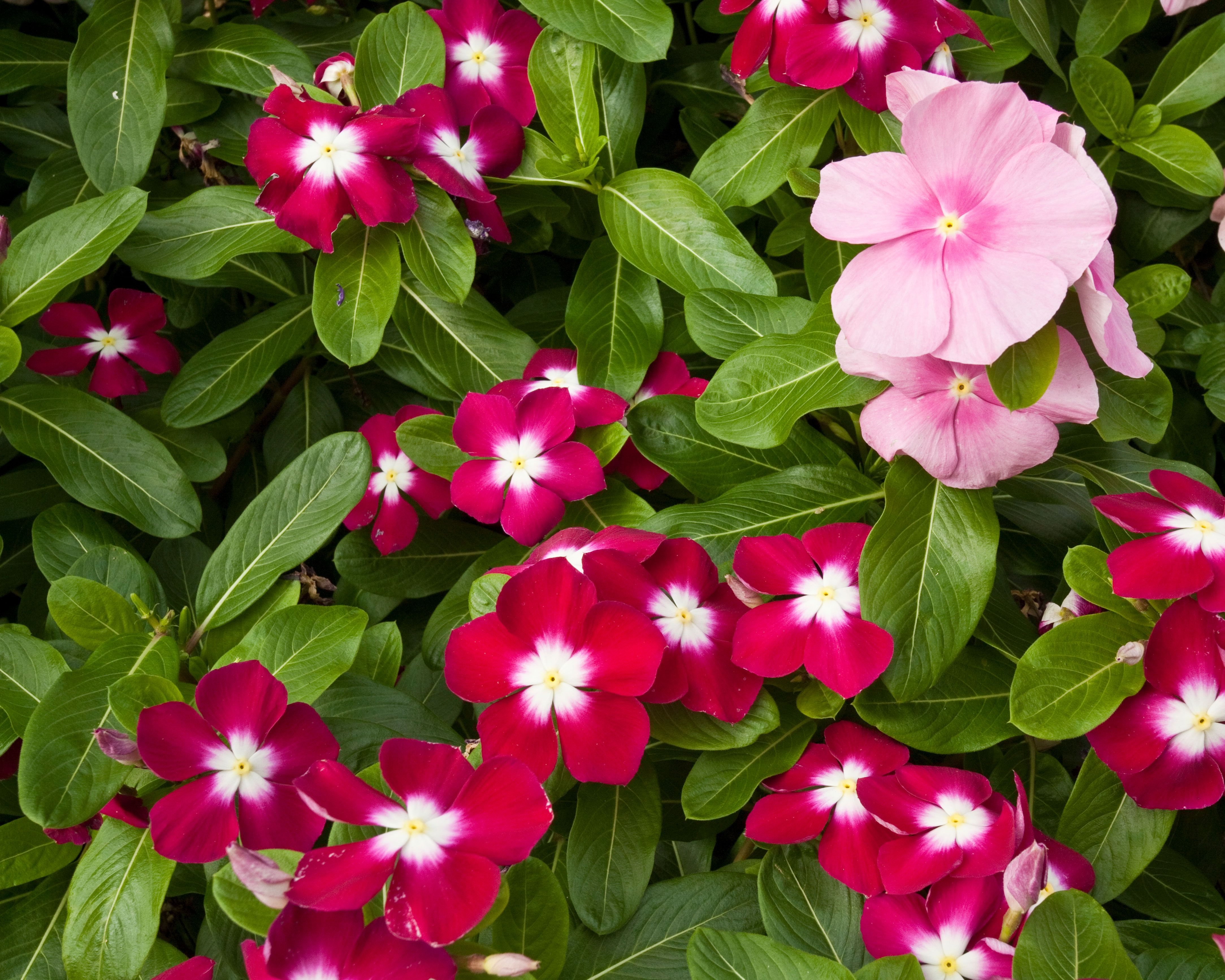
Zones 2–11
Impatiens, also known as busy lizzies are bright and pretty bedding plants with deep green leaves and a profusion of flowers, so an ideal choice if you're considering how to plant a flower bed. They are available in lots of colors including white, red, pink and purple.
Impatiens are quite a compact plant with a mounding habit, and they work well in borders, among other plants and in hanging baskets. They will tolerate full shade, but prefer partial shade, with a few hours of sunlight in a day if possible. In cooler climates they will grow as an annual, and in warmer climates they can be overwintered and grown as a perennial.
The cultivar Impatiens capensis, also known as jewelweed are among the flowers that attract hummingbirds.
Sow seeds in early spring in a tray of moist seed compost and cover over. Germination should take around 2-3 weeks. Once they have their second set of leaves, they can be pricked out into modules. Grow them on for a little longer before transplanting into the garden.
8. Lily of the Valley
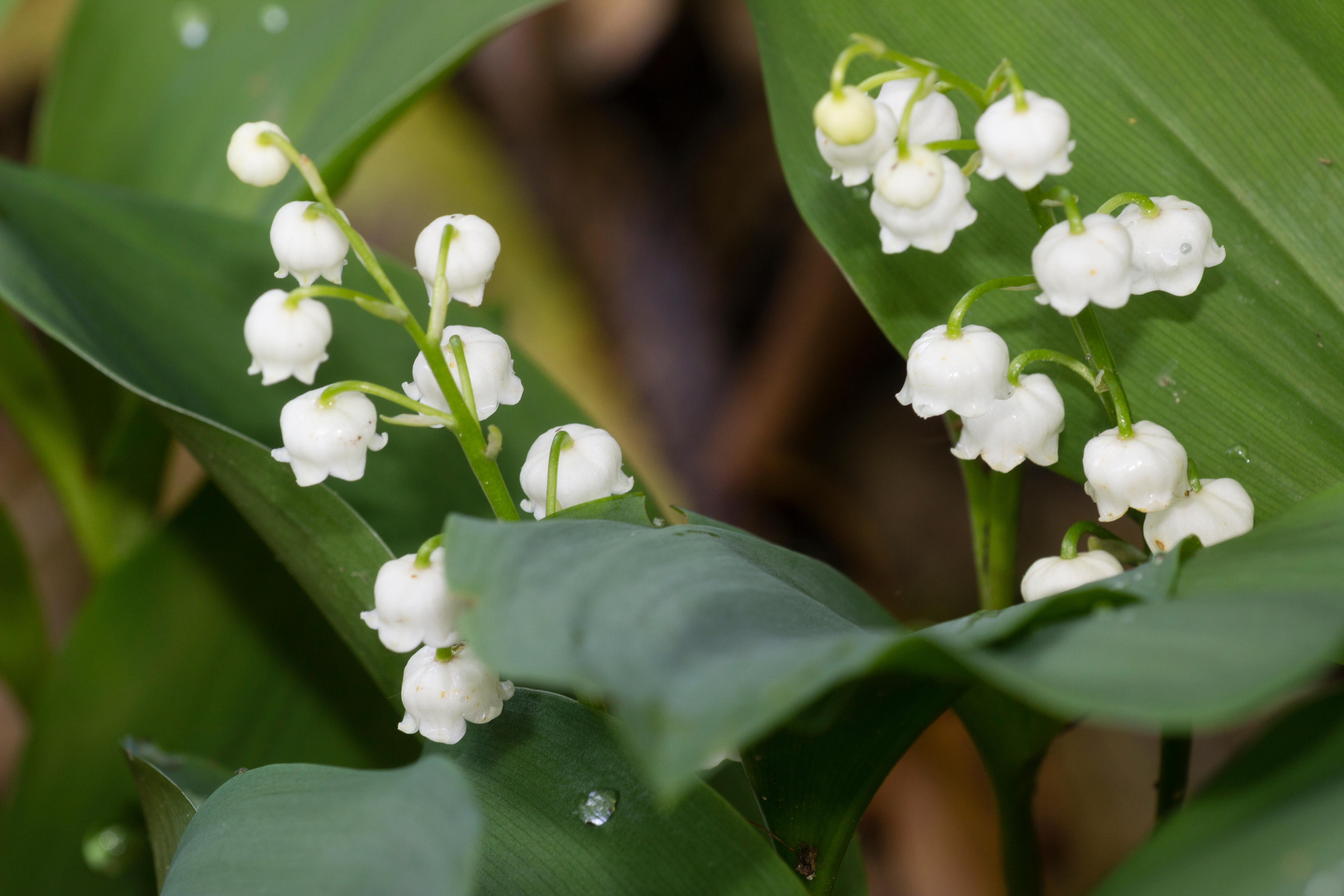
Lily of the Valley is a delicate and beautiful shade plant. Featured in Kate Middleton’s wedding bouquet this truly is a classic choice that will always bring you joy. Lily of the valley can be grown by purchasing a plant or bulbs, or by dividing an existing clump.
When considering how to grow lily of the valley, this plant can be lifted and divided. Carefully lift the plant out of the ground and using your hands tease away some of the bulbs. Keep them in small groups of around 2 or 3 if possible. You may need to cut some of the roots with a sharp knife if they are tangled. Then transplant them to where you want them to grow.
Do be aware, however, that these shade loving plants are poisonous plants, so be careful if they are planted in gardens where children may play.
9. Japanese forest grass – hakonechloa

Zones 5–9
Hakonechloa, or Japanese forest grass, is a popular shade plant. Ornamental grasses add movement and structure to a garden and are an important element in creating a well-rounded display. This grass forms attractive mounds with bright green / yellow blades.
While a lot of grasses prefer full sun, Japanese forest grass is a shade loving species. It prefers full shade where possible. Japanese forest grass will thrive in a moist, well-drained soil. Adding organic matter can help to create better soil.
Heidi from Garden Crossings recommends the variety 'All Gold'; ‘I just love how All gold has a beautiful pop of color,’ she says. ‘It’s got these stunning chartreuse green leaves that pair really nicely with the bold deep greens,’ she continues.
It is best to grow hakonechloa from a nursery plant or by dividing an existing plant. Divide crowns in early spring as they are just beginning to sprout. Lift the plant gently out of the ground and cut the crown using a sharp knife or spade. Ensure that there is at least one – preferably more – shoots and roots per section.
Plant in groups 11in. (30cm) apart to create the appearance of one large plant.
10. Columbine – aquilegia
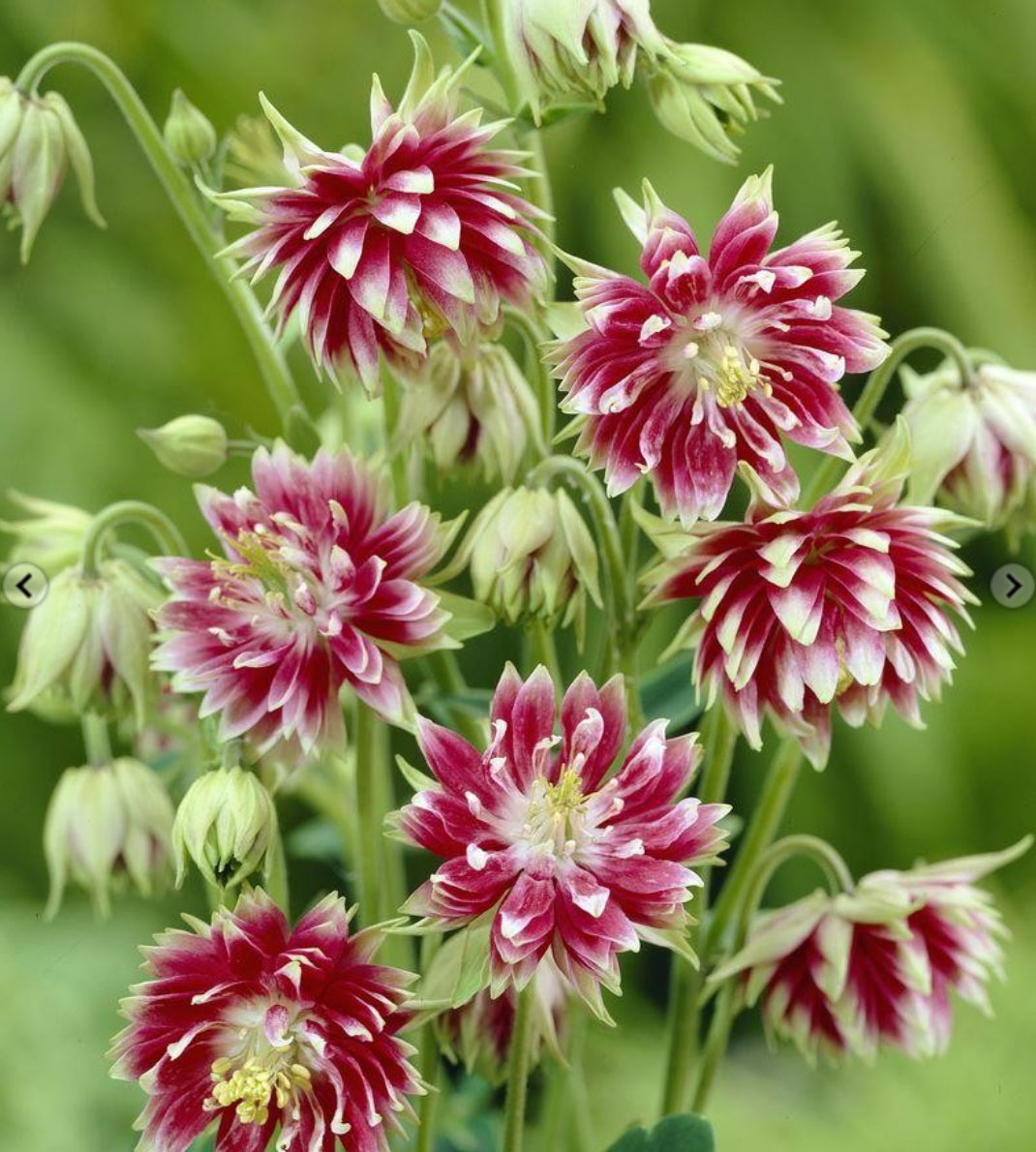
Zones 3–9
Columbine or aquilegia is an attractive perennial with tall flower stalks and interesting shaped flowers in a range of colors. They are easy to grow and will self-seed in the garden if allowed and are popular cottage garden plants if you are looking for cottage garden ideas.
In warmer zones these plants will do well in the shade, but they will need at least a few hours of sunlight in cooler zones.
Columbines are not too fussy but they like a well-drained soil, as long as it is not too dry. Mulch in spring to avoid the soil drying out too much.
You can sow seeds inside in trays 8-10 weeks before the last frost or sow directly into the ground. Columbine grow easily so sowing directly is the easiest way to grow them. Allow the seed heads to develop and self-seed for more plants every year.
What plants grow fast in shade?
When planning a garden, we often want to know what plants grow fast in shade. All the plants listed above are good shade plants. Caladium, hostas and impatiens are all relatively fast-growing plants. However, it's important to remember that when growing plants in shade, they are naturally going to grow at a slower rate. Plants that are adapted to life in shady spots will also be adapted to growing slower. This is because photosynthesis is slower in low light conditions.
What do we mean by shade?
Shade is a term used to describe any area that does not get direct sunlight. Often an area will be in shade some of the time, and sunlight some of the time. Full shade refers to an area that is always in shade. Partial shade refers to an area that is shaded more than it is in sun.
Generally, plants can adapt to growing in conditions that are sunnier. For example, a plant adapted to full shade will often grow well in partial shade. But plants that are adapted to more sunny conditions will not grow well when placed in too shady a spot.

What's the best perennial to plant in the shade?
Most of the plants listed above are great perennials to plant in shade. The best one will depend on the conditions that you have in your backyard, and your personal taste. If you have plenty of space in a shady spot, try a few of these plants together to create a beautiful and striking display.
What flower does well in shade?
It can be a challenge to find a flower that does well in shade, but we have listed a few here for you to try. Lily of the valley is subtle and pretty; columbine will add height and interest; and impatiens are great for bringing in color and lightening a dark spot. Heuchera is also a great choice as you get pretty flowers and interesting foliage.
Sign up to the Homes & Gardens newsletter
Design expertise in your inbox – from inspiring decorating ideas and beautiful celebrity homes to practical gardening advice and shopping round-ups.

Becky is a freelance writer, blogger, and podcaster. Her blog, Sow Much More and her podcast The Seed Pod are aimed at making organic gardening more accessible and encourage others to grow their own food.
-
 The 11 British interior design styles you are going to want to bring into your home – no matter which side of the pond you live on
The 11 British interior design styles you are going to want to bring into your home – no matter which side of the pond you live onInterior designers share their favorite British design trends and how to recreate them in your own home
By Pippa Blenkinsop Published
-
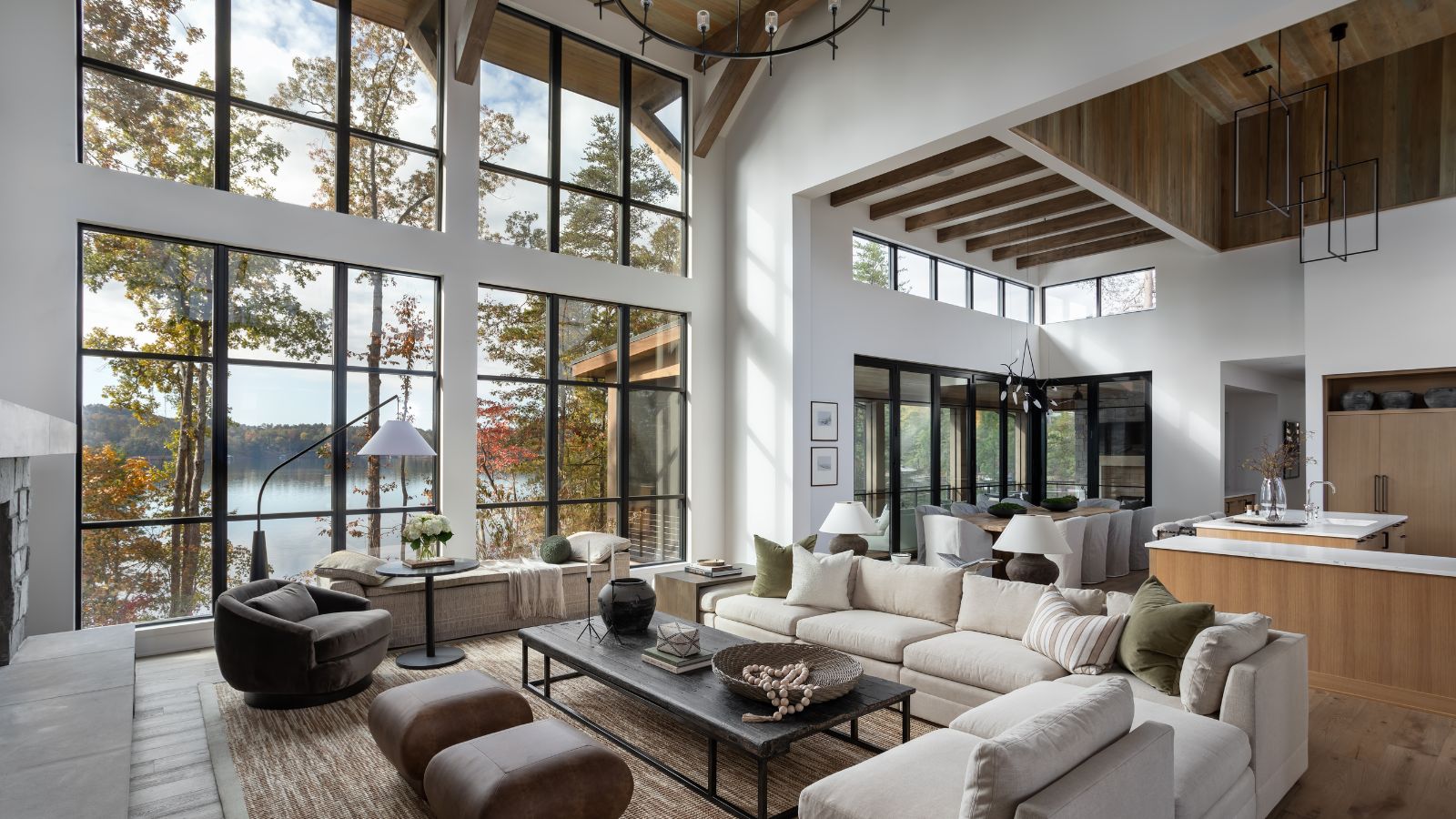 7 ways to decorate with wood – designers share the best ways to make the most out of this versatile material
7 ways to decorate with wood – designers share the best ways to make the most out of this versatile materialThis is how the design experts embrace the timeless natural beauty of decorating with wood
By Karen Darlow Published